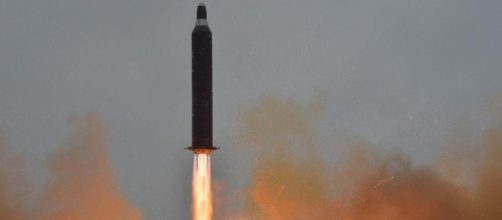Amid strong tensions over its weapons program, North Korea fired a new missile on Saturday, without success. The rocket, launched from a region north of Pyongyang, exploded in a few minutes and, according to the US command of the Pacific, failed to leave the North Korean territory. It was the second test, and the second failed, since the military parade in the capital of the country on the 15th, in which the regime of Kim Jong-un exhibited his most modern missiles.
Taking tougher measures
The timing of North Korea's new challenge to the international community was especially significant.
In New York, a session of the Security Council discussed what to do with the weapons program. Washington had warned of tougher measures against the country.
In South Korean waters, US and South forces have completed military maneuvers that they have developed over the past month, and Pyongyang sees a threat year after year. The arrival of the aircraft carrier Carl Vinson, who will join the nuclear submarine Michigan, is expected in the area, which docked in the South Korean port of Busan Tuesday.
The White House's first reaction was cold. In a statement, he confirmed the ballistics test and detailed that the president had been informed. Donald Trump, however, did not take an hour or so to respond on Twitter: "North Korea has not respected the wishes of China and its much-respected president by launching, albeit unsuccessfully, a missile today.
Bad!"
North Korea disrespected the wishes of China & its highly respected President when it launched, though unsuccessfully, a missile today. Bad!
— Donald J. Trump (@realDonaldTrump) April 28, 2017
Major conflict
President Donald Trump has warned of the risk of a "major, major conflict" and his Secretary of State, Rex Tillerson, has called for a global action to prevent "catastrophic consequences." "The risk of nuclear attack on Seoul or Tokyo is real and it is only a matter of time before Pyongyang develops its ability to reach American soil," Tillerson said. "Not acting now can bring catastrophic consequences. All options to respond to a future provocation are on the table, "added the Secretary of State.
In August of last year it already successfully launched a missile from a submarine. In February it tested an intermediate-range missile, the Pukguksong-2, fueled with solid fuel, an achievement that allows the projectile to lengthen its course. In March it launched four missiles simultaneously, three of which reached waters under Japanese control. Since then, his tests have ended in failure. Before this Saturday, the last one had taken place on the 16th, a day after the military parade.
Analysts acknowledge the possibility of North Korea planning a new nuclear test, which would be the sixth in its history. Satellite imagery has shown an increase in activity in the Punggye-ri area, where other previous trials have been completed, although Pyongyang has so far refrained from using that option.
Instead, this week has commemorated the anniversary of its army with massive military maneuvers, which used real fire and, according to South Korea, were the largest in its history.

